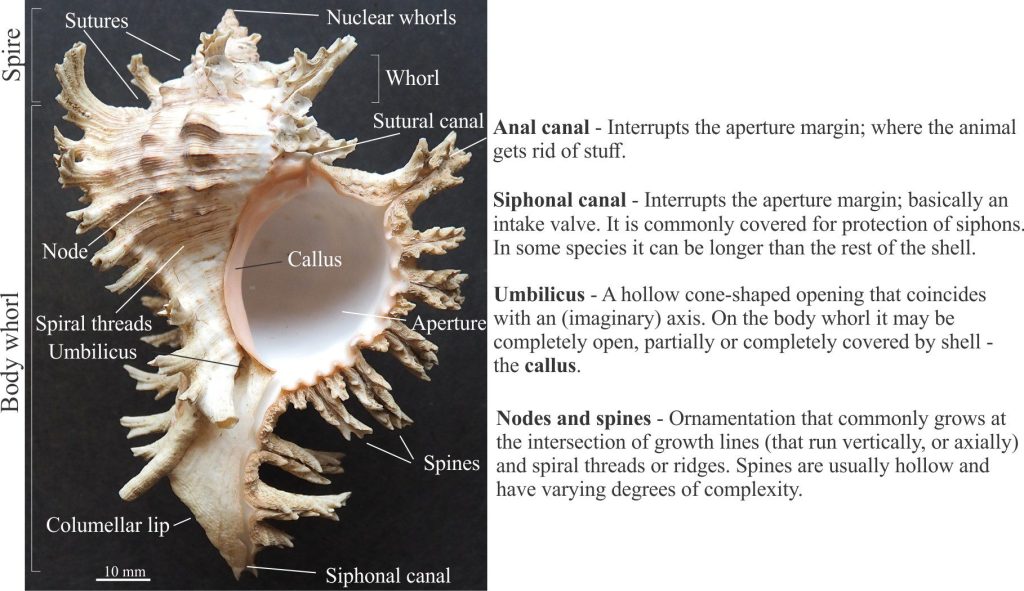
The morphology of common invertebrates – for sedimentologists
Ok, you’re not a paleontologist but during a sedimentological – stratigraphical examination of outcrop or core you encounter body and trace fossils – whole and fragmented shells, carapaces, skeletons, or rigid frameworks, as scattered occurrences, or packed communities. Notwithstanding their potential biostratigraphic value, identification of these fossil critters will provide important clues about depositional processes and paleoenvironments, paleoecology, unconformities and condensed sections, and taphonomy (how dead critters are preserved). The circumstances of field work may mean that your eager paleontologist colleague cannot stand at the outcrop and regale you with all the observable taxonomic and paleoecological information you need. That task is appointed to you.
Identifying fragments even to the level of phylum is a useful beginning; are they molluscs or brachiopods, corals or bryozoa. It is a truism that the larger or more complete a fossil, the easier it will be to identify to any taxonomic level. However, even with small fragments there may be distinguishing features that allow identification to Class or Order levels of taxonomy. For example, it will frequently be possible to determine whether fragments of molluscs are bivalves (pelecypods), gastropods, or ammonites?
The posts herein provide brief descriptions of the morphological attributes of the more commonly fossil invertebrates.
Here also is a glossary of the terms used in these posts – Glossary of Paleontology
Bivalve morphology for sedimentologists
Trilobite morphology for sedimentologists
Gastropod shell morphology for sedimentologists
Cephalopod morphology for sedimentologists
Brachiopod morphology for sedimentologists
Echinoderm morphology for sedimentologists







